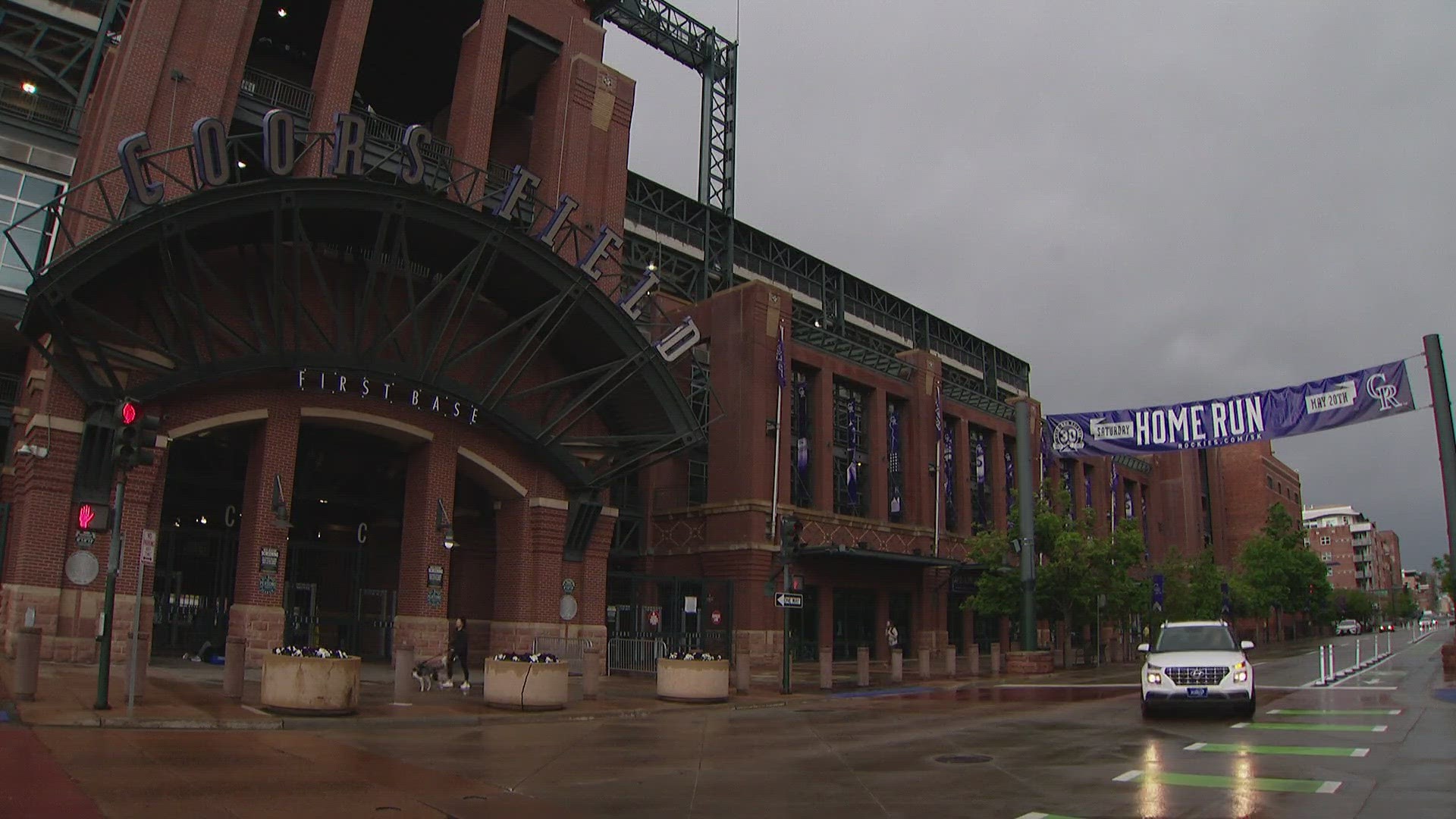DENVER — Severe storms moved across the Front Range on Thursday afternoon.
The National Weather Service in Boulder issued Severe Thunderstorm Warnings for much of the Denver metro area during the afternoon.
Denver International Airport was on a ground stop until 4:30 p.m. As of 9 p.m., 538 flights were delayed and 13 were canceled.
The first Severe Thunderstorm Warning included the southern part of the metro area and included Denver, Aurora, Centennial and areas in between. A second warning then covered an area farther north and west of there. Both warnings, which expired by 4:30 p.m., included up to 50 mph winds and hail.
VIDEO ABOVE: Rockies game goes on despite spring storm
The National Weather Service also issued a Special Weather Statement that expired at 5 p.m., warning of 30 mph winds and penny-sized hail for the northern Denver metro area, including Commerce City, Westminster, Thornton, Northglenn, Dupont, Henderson and Eastlake.
Thursday afternoon through the evening hours, watch for isolated storms across Colorado. There's a marginal risk for severe weather along the Interstate 25 corridor and counties south of Interstate 70. Be prepared for small hail, gusty winds, heavy downpours, lightning and thunder.
Overnight, the storms will clear and lows remain mild, in the lower 50s across the urban corridor.
On Friday, we'll start the day sunny and dry, with Denver highs in the lower 80s, before another round of afternoon storms moves in. The Front Range and eastern plains will be under a marginal risk for severe weather. The main elements to watch for will be hail, gusty winds and heavy rainfall.
For Memorial Day Weekend, highs stay in the upper 70s and low 80s, with more isolated afternoon storms expected Friday and Monday. Sunday is looking to be drier, with only slight chances for storms.
RELATED: Latest forecast
What is Severe Weather?
According to the National Weather Service, there are five specific types of weather that can qualify as "severe." They are tornadoes, floods, lightning, hail and wind.
RELATED: What is severe weather?
A thunderstorm is considered severe when winds reach at least 58 mph and/or contains hail at least 1" in diameter. When these conditions are met, the NWS will issue a severe thunderstorm warning.
RELATED: How is hail formed?
Lightning and heavy rain are not included, but often accompany severe thunderstorms.
The National Weather Service will issue a flash flood warning when the flooding is already occurring or imminent. A flash flood watch means that conditions are favorable for a flash flood and those in the area should keep a close watch.
A tornado watch is issued by the NWS when they determine that weather conditions are favorable for the formation of tornadoes. They usually last for a long time, cover a large area and begin well before any tornadoes or other severe weather begin.
A tornado warning is issued if a tornado is indicated by radar or reported by weather spotters. They are generally for a much smaller area and only last for about 30 minutes. If a tornado warning is issued in your area, you should seek shelter immediately.
RELATED: What to do in a tornado warning
>> Live interactive radar:
SUGGESTED VIDEOS: Severe Weather

